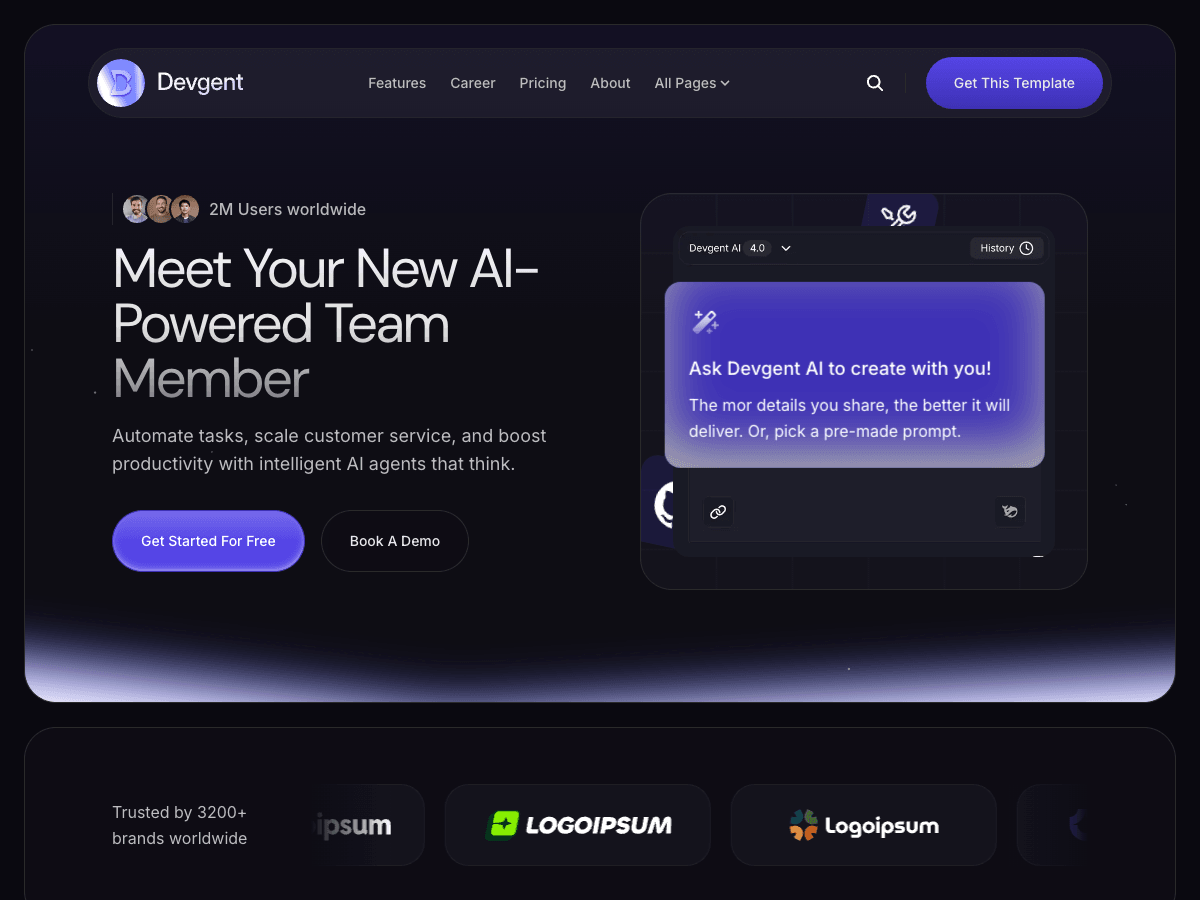
Modern websites rely on structured content, fast performance, and workflows that make publishing and organizing information simple. Whether you're building a blog, documentation site, knowledge base, or marketing website, the framework you choose directly impacts speed, SEO, maintainability, and developer experience.
Astro has quickly become one of the top choices for content-focused websites. not because it’s popular, but because it takes a fundamentally different approach to how sites are built and delivered. By shipping minimal JavaScript, offering a flexible component model, and providing tools designed for managing and scaling content, Astro makes modern websites faster and easier to maintain.
In this article, we’ll explore why Astro is becoming the go-to framework for content-driven sites, what makes it different, and when it may not be the best fit.
What Makes a Great Framework for Content-Driven Sites?
Before looking at Astro specifically, it’s important to understand what content websites need:
- Fast performance (especially on mobile)
- Minimal client-side JavaScript
- A strong content model (collections, Markdown/MDX, typed content)
- Easy CMS or Git-based editor integration
- SEO-ready HTML output
- Flexibility to add interactivity where needed
- A calm, predictable developer experience
Astro was designed specifically around these requirements, which is why it stands out.
1. Performance-First Architecture (The “Islands” Model)
Most frameworks ship JavaScript even when a page doesn’t need it. Astro’s key innovation is its Islands Architecture, where only the interactive components are hydrated on the client. Everything else is sent as static HTML, resulting in extremely lightweight pages and near-perfect Core Web Vitals.
Articles explaining Islands Architecture note that this selective hydration model is ideal for content-first sites where most sections don’t require JavaScript.
This leads to:
- Smaller bundle sizes
- Faster Time to Interactive (TTI)
- Higher Lighthouse scores
- Better real-user performance on slow networks
Astro doesn’t just “optimize” performance; its architecture guarantees it.
2. Built for Content: Collections, MDX, and Structured Content Workflows
Unlike many frameworks that treat content as an afterthought, Astro includes Content Collections, type-safe schema definitions, and first-class support for Markdown, MDX, and Markdoc.
This gives you an organized, predictable way to manage large content libraries (blogs, docs, categories, authors, etc.) with the flexibility of writing in MDX. The official documentation emphasizes collections as a core tool for content-heavy websites.
Additionally, Astro integrates smoothly with headless CMS options like Sitepins, Sanity, and Contentful, something the docs and tutorials highlight frequently when discussing workflows for editors and clients.
For content-heavy sites, this is a major advantage.
3. Better SEO by Default
Search performance matters for documentation, marketing sites, and blogs. Because Astro outputs clean HTML with minimal JS, sites naturally score higher in Lighthouse SEO and performance tests.
Case studies comparing WordPress and Astro migrations show significant improvements in load times and rankings after switching to Astro’s static-first output and reduced JS footprint.
Developers also report excellent SEO results in community feedback and performance discussions, where Astro consistently outperforms JS-heavy frameworks in real-world metrics.
4. Excellent Developer Experience with Any UI Framework You Like
Astro is framework-agnostic, letting you use:
- React
- Svelte
- Vue
- Solid
- Preact
- Or no framework at all
You can even mix them within a single project, which developers appreciate for migration paths or for integrating legacy components.
This flexibility is one of the most praised aspects of Astro in community write-ups and tutorials.
Astro lets you “bring your own component framework,” but it only ships JavaScript for the components that actually need interactivity — a rare combination of freedom and performance.
5. A Fast-Growing Ecosystem and Strong Community Momentum
Astro’s rapid growth is well documented. GitHub stars, npm download growth, and community activity continue to rise, and Astro’s annual “Year in Review” showcases significant expansion in features, contributors, and adoption.
These growth reports highlight Astro’s rising popularity among developers building content-first applications.
A strong ecosystem means:
- More tutorials
- More integrations
- More themes
- More learning resources
- More long-term reliability
For developers choosing a framework for the next 3–5 years, this momentum is important.
6. Perfect for Marketing Sites, Blogs, and Documentation
Astro’s architecture is especially effective for:
- Content-heavy blogs
- Documentation sites
- Startup landing pages
- Product marketing pages
- Knowledge bases
- SEO-driven content hubs
- Static sites with occasional interactive components
Because these use cases rely on text, media, structured content, and strong SEO, Astro aligns with the needs of modern content-driven websites more directly than many general-purpose frameworks.
When Astro Might Not Be the Best Choice
Astro is incredible for content-first sites, but it’s not ideal for everything.
If you’re building:
- A full dashboard
- A real-time web application
- Heavy, interaction-driven UI
- A single-page app with constant user interaction
Then a client-side framework like React, Solid, or Vue may be a better fit.
Community discussions regularly note that Astro shines for content but is not optimized for building complex SPA-style applications end-to-end.
How to Know If Astro Is Right for Your Next Project
Use Astro if your site is:
- Mostly content-driven
- Focused on SEO
- Intended to load extremely fast
- Built for founders, clients, or editors using a CMS
- A blog, doc site, landing page, or marketing site
- A static site with pockets of interactivity
Choose another framework if you need a highly dynamic, interactive, stateful SPA.
Conclusion
Astro is becoming the framework of choice for modern content-driven websites because it focuses on the things that matter most: performance, structured content workflows, SEO, flexibility, and ease of integration with CMS tools. Its island-based architecture and content-first design make it uniquely suited for today’s needs, where speed, clarity, and maintainability are more important than ever.
With Astro, you get the benefits of static sites, the flexibility of component frameworks, and a structure that scales naturally as your content grows. It’s a rare combination and a big reason why developers, founders, and agencies are adopting it at a rapid pace.
If you're planning to build a fast, content-focused website and want a strong starting point, you can explore Themefisher’s Astro themes, designed to follow best practices and give you a clean, fast foundation to build on.





